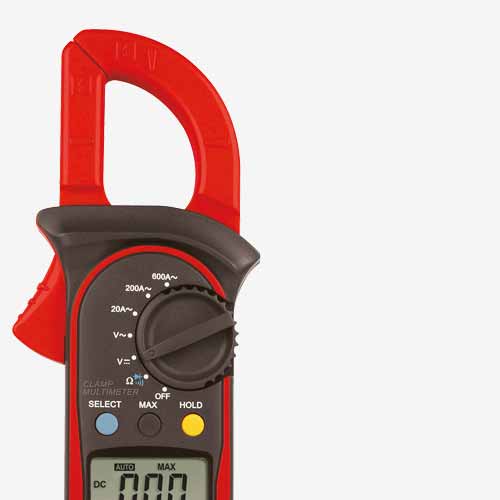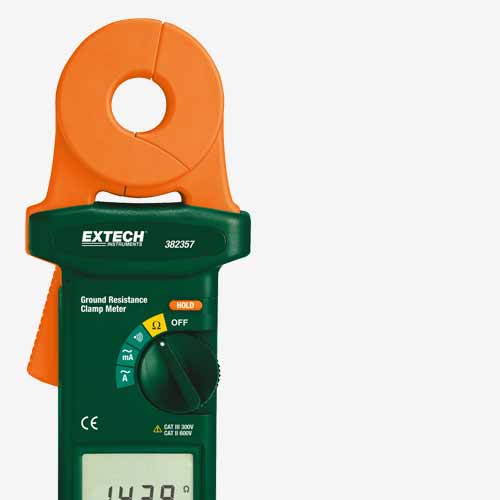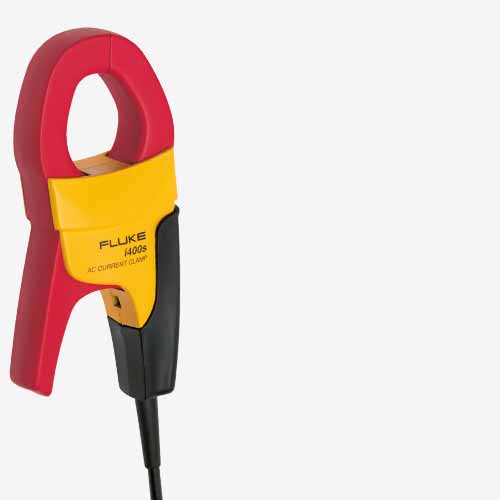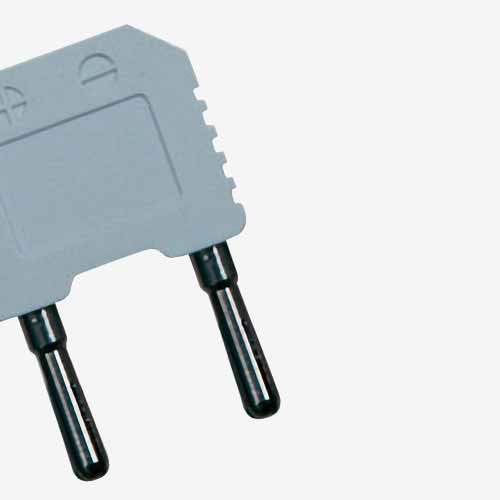About Clamp Meters
Usually made up of a digital measuring device connected to a pair of jaws that can be of various sizes, clamp meters allow accurate measurements of electrical current without needing to physically connect with a circuit.
The jaws or clamp fit snugly around most electrical conductors, allowing you to gain readings without taking circuitry apart and performing more complex testing procedures. They're generally an exceptionally versatile tool that can measure both AC and DC, but make sure you grab the suitable model for your needs as lower budget clamp meters generally have a lower measuring range than their more expensive counterparts.
Many clamp meters are also directly integrated into both analogue and digital multimeters, allowing you to complete more tests than just the standard electrical current reading. There's also a range of clamp meters that use True RMS technology, eliminating damaging waveforms that can make test readings inaccurate.
One of the most truly useful clamp meters available in Tester's range is none other than the Fluke I3000. This tester has a new flexible testing head, this top-of-the-range product is the perfect solution for testing electrical currents in awkward places where normal clamp meters just won't reach. The device measures up to 3000A has a CAT III 600V rating and is also extremely portable due to its flexibility and compact size.
If you've chosen a clamp meter, why not also browse our expanding range of clamp meter accessories? We stock everything from power supply modules to flexible probes, so make sure you check out the full range of accessories and improve your testing capabilities even further!
Struggling to make a decision on which clamp meter is right for you? Get in touch and we will be delighted to talk you through our range of products and advise you on a purchase.
How Do Clamp Meters Work?
A clamp meter is a test instrument used most frequently to measure large currents in industrial applications. Clamp meters are available that can measure currents up to 400 A.
To measure the current in a conductor, you clamp the meter around the conductor so that the conductor passes through the space between the jaws of the meter. This is shown in the image at right.
The jaws of a transformer-type clamp meter contain coils that are the equivalent of a transformer's secondary winding. As the current changes, the magnetic field around the conductor changes, and this induces a current in the clamp meter's coils that is proportional to the current in the wire. Measuring this current will also give you a measure of the current in the conductor.
The drawback of using a transformer-type clamp meter is that you can only measure AC currents or pulse currents with it. Clamping the meter around a conductor carrying a DC will result in a reading of 0 A. The reason for this is that a transformer only produces an output current when the magnetic flux cutting through the transformer windings changes.
To measure DC currents, some clamp meters use Hall Effect sensors. Hall Effect sensors are transducers whose output varies in response to the strength of the magnetic field. Since the field need not change to produce an output, clamp meters that use a Hall Effect sensor can measure DC and AC.
In addition to measuring AC and DC currents, modern clamp meters also have the measurement functions that you'd expect to find in a multimeter, including resistance and continuity, voltage, frequency, and in some cases, capacitance. These features make life a lot easier for the industrial technician. Instead of carrying a whole slew of instruments out to the plant floor, into the field, the technician need only carry his or her clamp meter.
Popular Clamp Meters
-
Fluke 323 True-RMS Clamp Meter: A multifunctional clamp meter that allows measurements of AC, AC voltage, DC voltage, resistance and continuity to be carried out with ease.
-
Extech MA445 Digital Clamp Meter: Provides a range of features, making it ideal for both professional and amateur use.
-
Testo 770-3 - TRMS Clamp Meter: Its innovative grab mechanism allows easy access, even in confined spaces.
-
Kewtech KT200 Digital AC Clamp Meter: Simple-to-use clamp meter that can be used to measure current up to 400A AC and voltage up to 600V AC/DC.
FAQs
-
How do I use a clamp meter correctly?
Select the appropriate measurement mode (AC or DC) and set the range if your meter doesn't have auto-ranging. Open the clamp jaws and position them around a single conductor, ensuring no other wires are inside. Read the current measurement from the display and then turn off the meter to save battery life. Always refer to the manufacturer's manual for model-specific instructions. -
What is the difference between an AC and a DC clamp meter?
The difference between an AC and DC clamp meter is that an AC clamp meter measures alternating current (AC) flowing through a conductor, while a DC clamp meter measures direct current (DC). Some clamp meters are designed to measure both AC and DC currents, so it's important to select the appropriate mode for accurate readings. -
How do I measure different types of current with a clamp meter?
To measure different types of current with a clamp meter, first select the appropriate mode on the meter—AC or DC—depending on the current type you need to measure. For AC, set the meter to the AC mode and clamp it around the conductor. For DC, switch to the DC mode and clamp it around the conductor. Ensure the clamp is fully closed and properly aligned for accurate readings. -
What are the common features to look for in a clamp meter?
When selecting a clamp meter, look for features such as a broad measurement range, high accuracy, and the ability to measure both AC and DC currents. Auto-ranging simplifies measurements by automatically adjusting the range, while a clear, backlit display enhances readability. Additional useful features include data hold for freezing readings, appropriate clamp size for different conductors, and safety ratings to ensure protection. Versatility can be improved with extra functions like resistance measurement, continuity testing, or temperature measurement. -
How do I troubleshoot a clamp meter that is giving inaccurate readings?
To troubleshoot a clamp meter giving inaccurate readings, first check the calibration and ensure it is properly set. Verify that the meter is correctly configured for the type of current (AC or DC) and range being measured. Inspect the clamp jaws and leads for damage or debris that could affect accuracy. Ensure the clamp is fully closed around a single conductor and not interfering with other wires. If problems persist, refer to the user manual for error codes or troubleshooting steps, and consider contacting the manufacturer for further support. -
How do I interpret the readings from a clamp meter?
To interpret readings from a clamp meter, first ensure the meter is set to the correct mode (AC or DC) and range for the measurement. Check the display to read the current value directly. For accurate interpretation, ensure the clamp is properly positioned around a single conductor and fully closed. Compare the reading against expected values or reference standards for your specific application. If the meter has additional features like data hold or peak capture, use them to analyze fluctuating or transient currents.


 AC & DC Clamp Meters
AC & DC Clamp Meters
 Earth Clamp Meters
Earth Clamp Meters
 Clamp Adaptors
Clamp Adaptors
 Clamp Meter Accessories
Clamp Meter Accessories
